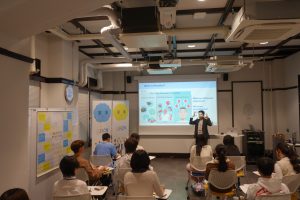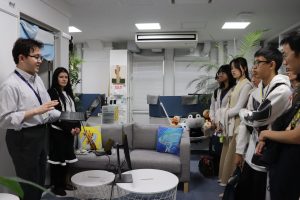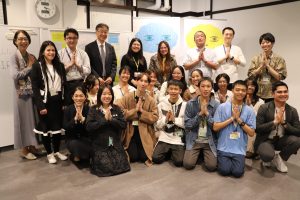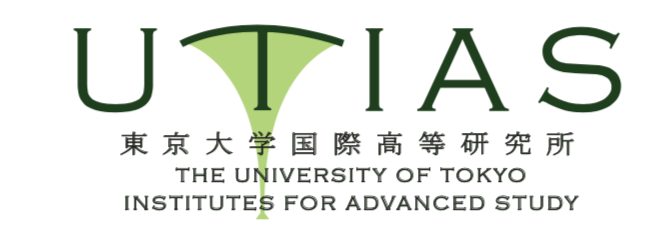On April 17th,2025, 12 students and 2 teachers from Princess Chulabhorn Science High School Chiang Rai, along with 3 teachers from Tokyo Gakugei University Senior High School, visited IRCN. The visit was part of an engaging science tour designed to spark curiosity and offer hands-on exposure to cutting-edge neuroscience research.
A Glimpse into the Future of Brain Science
The tour began with a warm welcome and an introduction to neurointelligence by Dr. Mayumi Kimura, Administrative Director. She explained this interdisciplinary approach to understanding the brain by integrating neuroscience, computational science, and technology.
This was followed by a captivating lecture by Dr. Von Ralph Dane Marquez Herbuela, Project Research Associate, titled:
“Decoding Human Emotions: Can AI Estimate Emotions Using Facial Expressions, Speech, and Physiological Signals?”
He introduced his latest research demonstrating how emotions can be estimated by analyzing facial expressions, speech and physiological signals such as brain waves (EEG), heart rate (ECG), and skin responses (GSR). By utilizing deep learning models, emotions become measurable and interpretable data, enabling AI to make informed emotional estimations.
Stepping into Labs
Students were then divided into 2 groups and visited 2 IRCN labs, where they had the rare opportunity to interact directly with young researchers and experience real research in action.
Yukie Nagai laboratory
“Robotics and Computational Approaches to Cognitive Development, Emotion Understanding, and Neurodiversity" by Dr. Von Ralph Dane Marquez Herbuela, Dr. Ruichen Li, Dr. Seiya Nakata and other researchers.
Students experienced how the deep learning models adjusted its predictions in real time on a 2D arousal-valence map based on their facial expression, speech, and physiological signals.
Students also enjoyed an interactive simulation that replicates the visual experience of ASD, presented through both real-time and recorded demonstrations.
They also experienced an experiment in which a robot equipped with a neural network model predicted the finished version of a student's drawing and added the necessary elements to it.
IRCN Babylab
"Exploring language development in infants: Insights from diverse methods" by Dr. Irena Lovcevic & Dr. Kenta Watanabe
The researchers introduced 2 types of studies (experiments) being conducted to elucidate the developmental process of language acquisition in children.
Study 1: using audio recorders and cameras that can be placed on the baby's clothing to capture infants' speech environment at home.
Study 2: using electroencephalography (EEG) to measure infants' brain signals to various speech sounds.
Conclusion
The students were exposed to the researchers' ideas and research during the tour. We hope this experience stimulated their intellectual curiosity as well as helped them discover the fun and joy of research.






